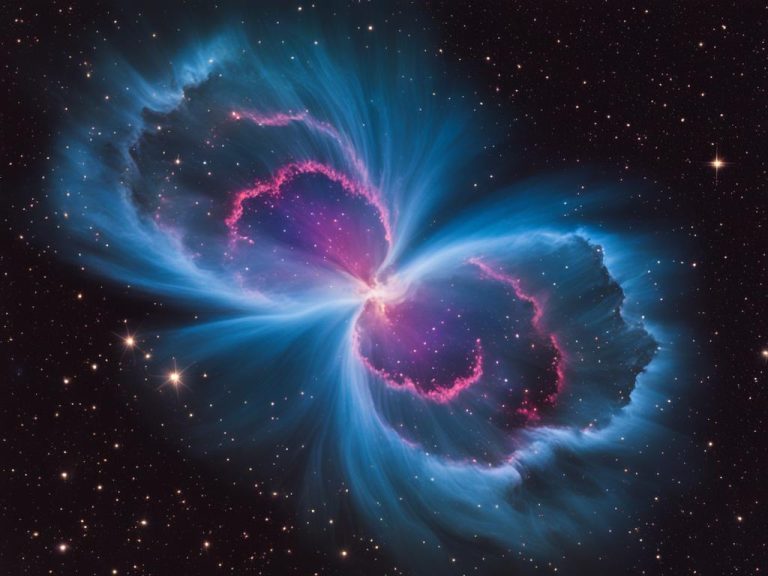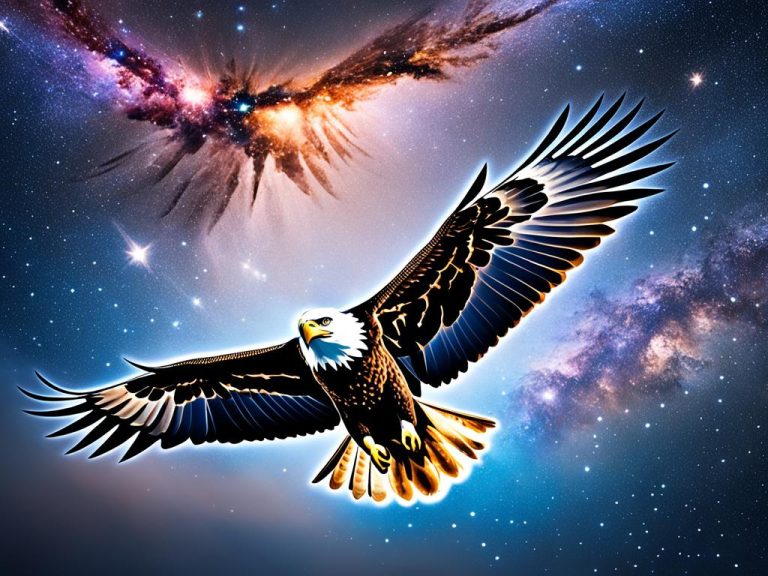Unlocking the Mysteries of the Aquila Constellation
Modified: July 2, 2024 Author: International Star Registry
Did you know the constellation Aquila holds the majestic eagle of Roman myth? It’s a top constellation in the night sky. Aquila spreads over the northern hemisphere’s celestial equator.
This area is a must-see. We will learn about its myth, bright stars, and deep-sky objects. Plus, we will see its role in various cultures. Get ready to sail through Aquila’s stars.
Key Takeaways:
- The Aquila constellation or gran caffe l’aquila is known as “the eagle” and is located in the northern sky on the celestial equator.
- Aquila is home to Altair, the 12th brightest star in the sky, and forms the Summer Triangle with Deneb and Vega.
- In addition to its bright stars, Aquila also contains captivating deep-sky objects such as planetary nebulae and open clusters.
- Throughout history, the Aquila constellation has held significant mythological and cultural symbolism.
- Considering naming a star in the Aquila constellation as a unique and memorable gift for any special occasion.

Are you ready to explore Aquila’s secrets? Let’s start a breathtaking journey through this cosmic realm. We’ll see amazing things in the celestial sky. Get ready for an adventure.
Facts and Location of Aquila Constellation
Aquila is a big and famous constellation in the sky’s northern part. Shaped like a mighty eagle, it stands out. You can easily see it.
Aquila is next to many other constellation friends. It shares its space with Aquarius, Capricornus, and others. It looks its best from certain angles of the Earth.
Want to see Aquila in the night sky? Look northeast in the warm summer. From July to November, it’s out there for everyone to see.
Bright Stars in Aquila Constellation
The constellation Aquila has many bright stars that grab the attention of sky lovers. The star Altair is especially important. It’s the brightest star in Aquila. Altair shines in the night sky with a brightness that can easily be seen with the naked eye. It is just 16.8 light-years away from Earth, which is quite close in cosmic terms.
Tarazed is another bright star in Aquila, coming right after Altair in brightness. A K3 bright giant, it’s about 461 light years away from us. Its glow enhances the Aquila constellation, making it a beauty to behold for everyone who looks up.
Also in Aquila, you’ll spot the Okab star cluster. This group of stars adds to the constellation’s beauty when we gaze upon it at night. Its presence makes Aquila even more magnificent in the sky.
The stars in Aquila, like Altair, Tarazed, and Okab, show us amazing views and secrets of the universe. They help us marvel at the wonders out there. The Aquila constellation is a source of joy and learning for those who love space.
For more about the constellation Aquila and its stars, check out this link, this link, and this link.
Deep-sky Objects in Constellation Aquila
Aquila is a standout in the night sky for its deep-sky objects. It captures the hearts of both astronomers and anyone who loves looking at the stars. Now, let’s look at some of the most amazing deep-sky objects in Aquila.
The Phantom Streak Nebula (NGC 6741) is super interesting. This planetary nebula has a look that’s both ghostly and beautiful. People who take pictures of the sky and those who love to look at it enjoy seeing this a lot.
Then there’s Barnard’s E Nebula. It’s made of two dark nebulae that stand out against the stars of Aquila. These dark shapes add a special beauty to the night’s scenery.
Also, take a look at the amazing Glowing Eye Nebula (NGC 6751). It looks like an eye in the sky and is very captivating. Everywhere, people are spellbound by its unique appearance at night.
The Phantom Streak Nebula, Barnard’s E Nebula, and the Glowing Eye Nebula are just the start. Aquila has many more stunning deep-sky objects to see. Going through these wonders is an unforgettable experience that reminds us of the universe’s vastness and wonder.

Aquila Constellation Deep-Sky Object Highlights:
- Phantom Streak Nebula (NGC 6741) – A captivating planetary nebula
- Barnard’s E Nebula – Two captivating dark nebulae
- Glowing Eye Nebula (NGC 6751) – A mesmerizing planetary nebula
Myth of Aquila Constellation
The Aquila constellation has a great story from Greek mythology. It’s linked to an eagle that carried Zeus’ thunderbolts.
A favorite tale involves Aphrodite, the goddess of love and beauty. She changed into an eagle to get away from Zeus, who was after her. The eagle found safety in the sky, becoming Aquila.
Ganymede’s story is also famous with Aquila. He was a prince Zeus really liked. Zeus took the form of an eagle, Aquila, to bring Ganymede to Olympus. There, Ganymede was the gods’ cupbearer.
The Star Altair
Altair shines brightly in Aquila. Its Arabic name means “flying eagle.” Altair is in the Summer Triangle with Vega and Deneb.
Aquila’s myths make its stars even more fascinating. From Zeus’ thunderbolt eagle to stories of Aphrodite and Ganymede, Aquila’s legends leave a lasting impression.
Aquila in Different Cultures
Aquila, the eagle constellation, has amazed people for ages. It has inspired stories in many cultures across the world. These stories help us understand its special place in the sky and in our hearts.
In Hinduism, Aquila is seen as connected to Garuda. Garuda is a powerful bird and mount of Lord Vishnu. Known for speed, strength, and devotion, Garuda’s traits match Aquila’s grandness. This connection adds magic to the story of Garuda.
In ancient Egypt, Aquila might remind us of the falcon of Horus. Horus was linked to the sun and was believed to have divine sight. Just like Horus watches over us, Aquila looks out for the sky. The tie between Horus and Aquila shows how the ancient Egyptians valued the stars.
Across Asia, Aquila is part of many stories. Take the Chinese legend of the Weaver Girl and the Cowherd for example. Aquila’s Altair is the Cowherd Star, and Vega is the Weaving Girl. They meet once a year across the Milky Way on Qixi, or Chinese Valentine’s Day. This tale highlights love’s strength and Aquila’s influence on Asian folklore.
To learn more about Aquila and its place in culture and history, you can look at these resources:
- Discover more about Aquila in different
- Explore the ancient myths and folklore related to
- Uncover the astronomical significance of Aquila
The Aquila constellation has a big role in many cultures. It shaped their stories and beliefs. Its beauty and legends still touch our hearts today, reminding us of the vast universe.
International Star Registry and Naming a Star in Aquila Constellation
The Aquila constellation looks amazing in the night sky. It has bright stars and a cool story. You can name a star there through International Star Registry. It’s a special gift for someone you love or to remember a big moment.

International Star Registry lets you name a star. This gives the person a connection to the beauty of Aquila forever. You’ll get a beautiful certificate with the star’s name and exact place in the sky.
Naming a star shows love, thanks, and remembering. It’s perfect for special times like birthdays or to remember someone who’s gone. Naming a star in Aquila is a special and caring act.
Naming a star is a unique and caring gift. You also help keep their star list up-to-date. Since 1979, many people have trusted International Star Registry to name stars.
Want to name a star in Aquila? Or learn more about International Star Registry? Visit www.starregistry.com. Start your journey in the night sky and make a memory that lasts, for yourself or a loved one.
This constellation is a favorite among celebrities. Some celebrities that have their very own stars named in Aquila include Frank Sinatra, Jack Black, Tim McGraw & Faith Hill, Melissa Hart, and Howard Honig.
Aquila Constellation FAQs
Are you someone who loves looking at stars in the night sky? If so, you might know about the Aquila constellation. We have put together some common questions about Aquila. This will help you learn more about this magical sight in the sky.
What is special about the Aquila constellation?
The Aquila constellation has a lot of great myths and bright stars. It is the 22nd largest constellation. This means it covers a big area of our sky. Aquila has 11 main stars that form its unique shape.
It is loved by many for its beauty and what it means to people.
Which star is the brightest in Aquila?
The brightest star in Aquila is called Altair. It is an A-type star. Altair shines with great brightness in the night sky. It is about 17 light-years away from us.
Can I see the Aquila constellation?
Yes, you can see Aquila from different parts of the world, mainly in the north. The best time to see it is from July to November. August is the best month for seeing it clearly. So, if you are out on a clear night in August, look for Aquila in the sky.
To learn more about the Aquila constellation, check out sites like StarWalk, Kids Kiddle, and Universe Guide.
Conclusion
The Aquila constellation is a sight to see with both beauty and ancient stories. It’s a great chance to look up at the stars. Aquila’s bright stars and deep-sky objects captivate both stargazers and scientists. Its myths and cultural tales make it a thrilling part of the night sky.
For those new or experienced in stargazing, Aquila has much to offer. You can spot Altair, one of the night’s brightest, and the amazing Eagle Nebula. The constellation is full of awe-inspiring sights.
Aquila’s myths make it more than just stars in the sky. Different civilizations share stories about the constellation. These tales show a worldwide love for the stars and the unknown.
International Star Registry offers a chance to make special memories. By naming a star in Aquila, you honor loved ones with a timeless gift. This includes a personalized certificate to mark the occasion. Visit www.starregistry.com for more details and to choose the perfect star gift. What better way to commemorate a special occasion or honor a loved one than by naming a star in the Aquila constellation? With International Star Registry, you have the opportunity to etch your mark in the heavens forever. Whether it’s a birthday, Christmas, anniversary, or any other momentous event, naming a star is a unique and timeless gift that will be cherished for a lifetime.
Explore the Aquila constellation for a journey unlike any other. Let its wonders and stories spark your imagination. With a telescope or just your eyes, you can experience the magic of Aquila. It’s an invitation to dive into its myths and discover the mysteries of the universe.
Aquila Constellation FAQs
Are you curious about the Aquila constellation? Let’s answer some common questions:
1. What makes Aquila special?
Aquila stands out with its shiny stars and cool deep-sky objects. People also love its stories from mythology.
2. How many stars are there in Aquila?
In the Aquila constellation, you’ll find 11 stars shining bright. They make a beautiful picture in the sky.
3. Which is the brightest star in Aquila?
The brightest star is called Altair. It glows brilliantly, catching the eyes of all who look up.
4. When is Aquila visible?
You can see Aquila from July to November. It looks best in August. This is when its view is most stunning.
Ready to discover the Aquila constellation at night? Enjoy your stargazing adventure!
FAQ
What is the Aquila constellation?
The Aquila constellation is in the northern sky on the celestial equator. It’s called “the eagle” in Latin. This represents the eagle of the god Jupiter in Roman myths.
What are some bright stars in the Aquila constellation?
It holds stars like Altair, Tarazed, and Okab. Altair is the 12th brightest star. It makes the Summer Triangle with stars Deneb and Vega.
Are there any notable deep-sky objects in the Aquila constellation?
Yes, it has the Phantom Streak Nebula (NGC 6741) and Barnard’s E Nebula. These are planetary and dark nebulae. There’s also the Glowing Eye Nebula (NGC 6751), another planetary nebula.
What is the myth behind the Aquila constellation?
In Greek myths, Aquila is the eagle that brought Zeus’ thunderbolts. It also symbolizes Aphrodite disguised as an eagle. Zeus followed her as a swan. Altair’s name means “flying eagle” in Arabic.
What is the cultural significance of the Aquila constellation?
In Hinduism, it relates to deity Garuda. In ancient Egypt, it might be Horus’ falcon. Asian folklore includes Altair and Vega, separated by the Milky Way.
Can I name a star in the Aquila constellation?
Yes, you can name a star there via International Star Registry. It’s a perfect gift. This lets you remember special times or honor someone. Find out more at www.starregistry.com.
How can I find the Aquila constellation in the sky?
You can see Aquila from July to November, best in August. Look between latitudes +90° and -75°. It’s next to many other constellations in the sky.
What are some facts about the Aquila constellation?
It’s the 22nd largest, covering 652 square degrees. There are 11 stars that make it up. The brightest, Altair, is only 17 light-years from Earth.
When is the Aquila constellation most visible?
The best time to see it is from July to November. August is when it shines the most.
Source Links
- Aquila | Night Sky, Brightest Stars, Summer Triangle – https://www.britannica.com/place/Aquila-constellation
- Aquila: The Eagle Constellation – https://starwalk.space/en/news/aquila-constellation-guide
- Stars, Facts, Myth, Location, Deep Sky Objects – Constellation Guide – https://www.constellation-guide.com/constellation-list/aquila-constellation/
The night sky has always captivated humanity with its shimmering tapestry of stars, and among these celestial wonders lies the majestic Aquila constellation. Stretching gracefully across the heavens, Aquila has stirred the imaginations of countless civilizations throughout history. Let’s delve into the rich tapestry of its mythology, history, and how you can immortalize your own connection to the stars by naming a star in this constellation through International Star Registry.
